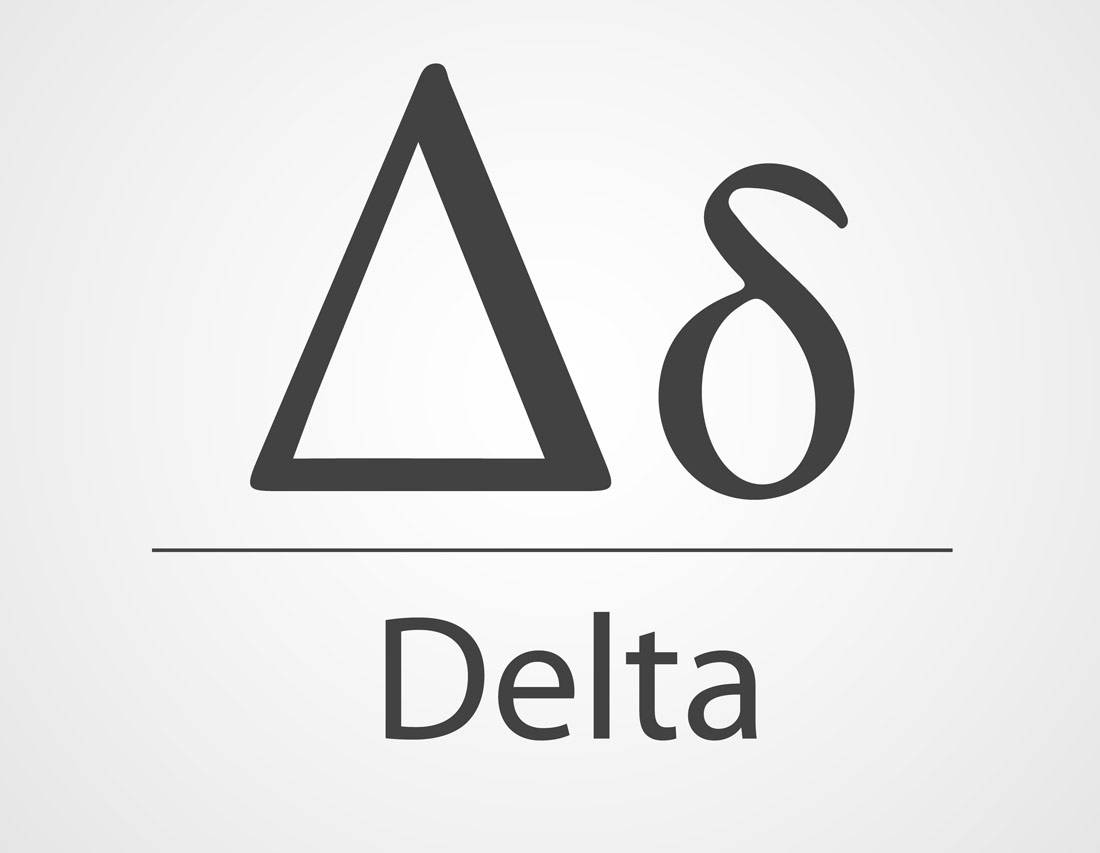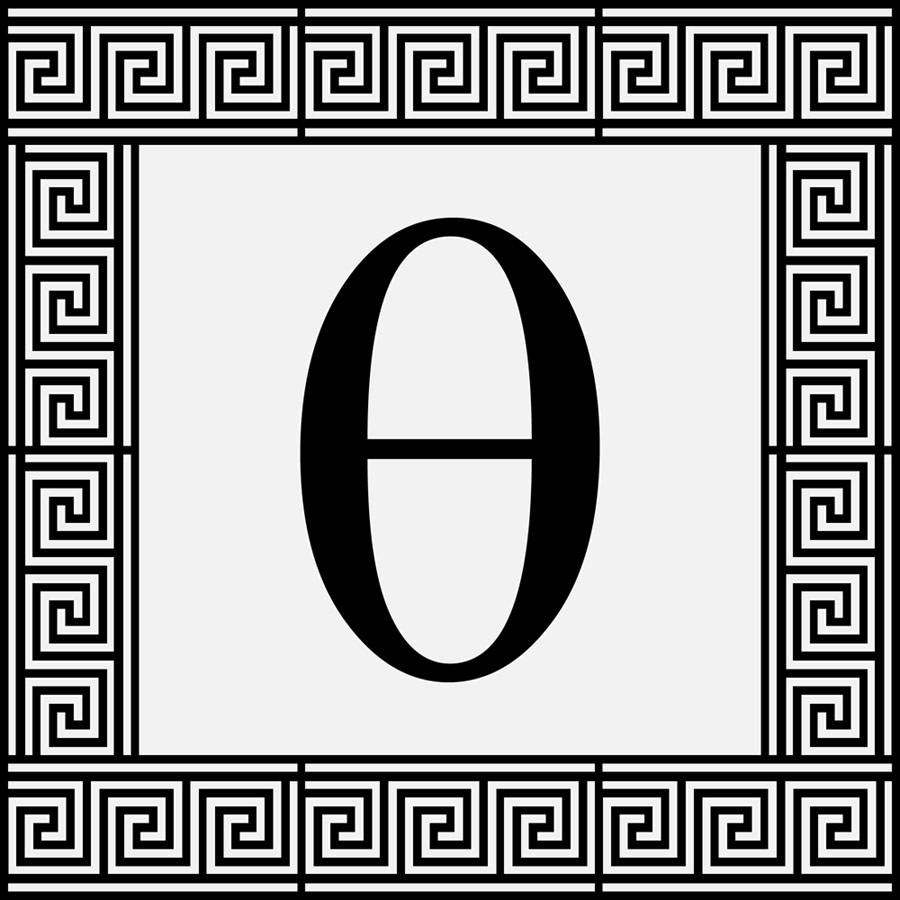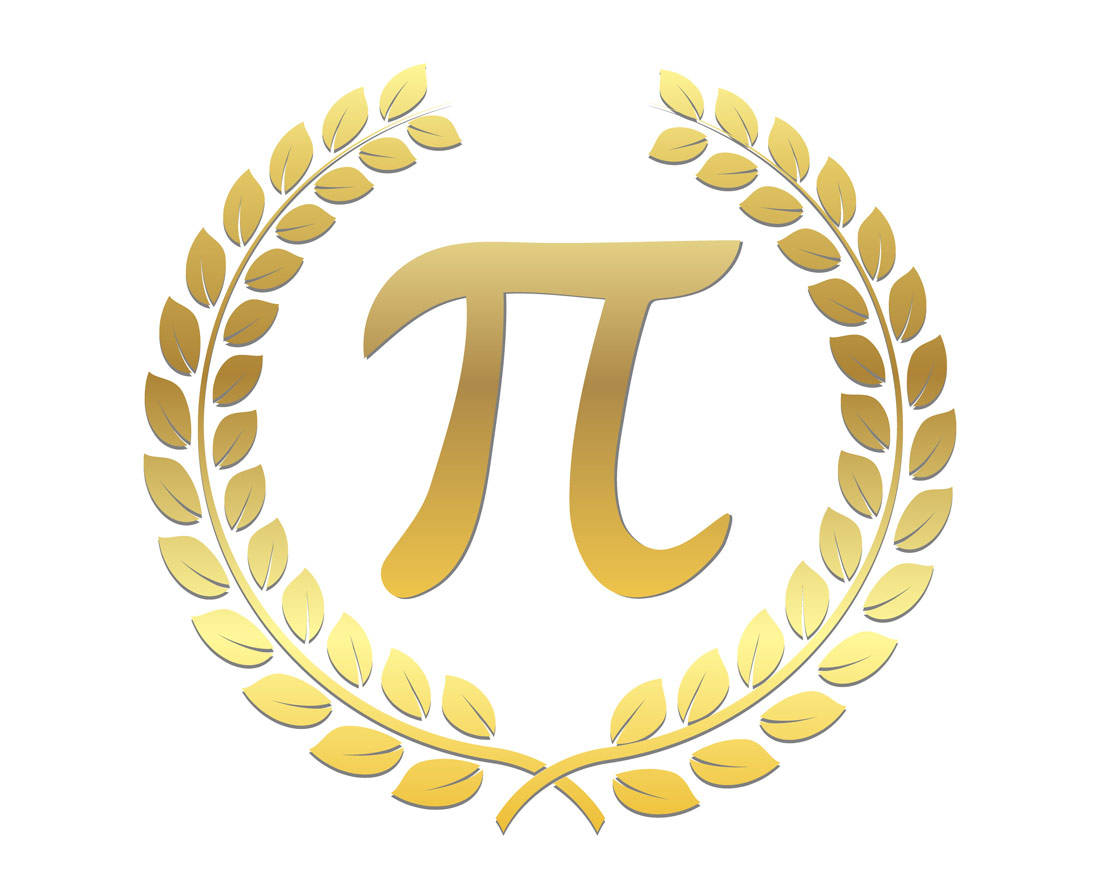There is certainly a reason that the 24 Greek letters find their absolute application in a field of human action that was inaugurated and established by our ancient ancestors.
So if there is one language spoken well by mathematicians, engineers, astronomers, physicists, chemists, etc., this is the language of Greeks. Why; Because it is part of the daily friction with their sciences.
Scientific terminology has a lot of Greece within it and the Greek alphabet has its honor when it comes to symbolizing or defining quantities, constants and variables.
Greek letters mean a lot to the world of science, which continues to quench its thirst in the cisterns of our ancestors in search of the sources of the scientific spirit and logic itself.
From the set of special terms used in the broader science, a good percentage are Greek. In fact, as we immerse ourselves in the specialization of every scientific discipline, the Greek letters acquire an even more special use, which is now known only to those who serve it.
This article should be considered as an introductory manual for the use of the Greek alphabet in science, in which, in order not to be completely lost, we will talk exclusively about the use of lower case Greek letters. If we add the use of funds, we would need hours and hours to talk…

Stable in nuclear physics, the small alpha is used to symbolize a number of things, such as radiation α, the emission of particle α, and the α particle, a helium-free nucleus of electrons. But also the decay a, the transmutation of a nucleus when it emits a particle a.
But the same lowercase alpha describes the angular acceleration, the rate of change of the angular velocity of a body measured in radii / second. Greek alpha finds many more applications in its individual sectors of physics and chemistry, such as electromagnetic and thermal physics.
It is even used in mathematics, in algebraic equations, usually representing angles, but also in statistics and aerodynamics.
Nuclear physics, that is, high-energy particles emitted by certain radioactive nuclei, speaks of β-particles and β-radiation. The production of β particles is called β decay and is internationally symbolized by the Greek beta.
The same small beta represents the speed of an object in relation to the speed of light in the special theory of relativity. In mathematics, b represents unknown variables, while its uses are also found in astronomy, in the calculation of orbits mainly…
Yes, you guessed it, there is also γ-radiation, as the radiation produced by radioactive nuclei. But also the extremely deadly ones rays c of course, the rays with the highest frequency in the electromagnetic spectrum that cause death in any organism with which they come in contact.
The special theory of relativity speaks for factor c, while with the same lower case Greek letter the photon is represented in particle physics, quantum mechanics and electromagnetic theory. But also in physicochemistry we find c and especially in chemical thermodynamics, now referring to the molecular heat capacities.
Neuroscience (next to the standard waves α, waves β, waves δ and waves θ) has recently been mentioned in brain waves γ, while the same letter is used in the mathematics, gamma functions and the γ-constant of Euler-Mascheroni, in engineering. , organic chemistry, biochemistry etc.

At a time when chapter d finds more uses in engineering and physics, the lowercase delta is not far behind. It is, for example, the symbol of the tiny change of a value in physics and mathematics, but also in chemistry it symbolizes the electric charge that is less than that of an electron, having other uses in the theory of covalent bonds.
The delta pedestrian has its honor in mathematics, with the Kronecker Delta and the Dirac Delta in Complex Analysis and Linear Algebra. It also finds applications in robotics, technical engineering, actuarial science, macroeconomics, and even optical mineralogy.
The lower epsilon is the international symbol of the dielectric constant (or electrical permeability) in physics, a principle that connects the units of electricity with those of engineering. With the same letter we refer to a very small amount in mathematics, while in the same branch with the Greek lower case epsilon is symbolized the antisymmetric tensor, a kind of tensor, of the geometric object that can be considered as a generalized vector and describes the linear relations between vectors. .
Remaining in mathematics, epsilon finds many more applications, such as in infinite calculus, but is also used in engineering, computer science (epsilon of the machine), astronomy, economics (elasticity), statistics, etc.
Zeta depicts Riemann's zeta function in mathematics, number theory, and is also used in probability theory and applied statistics (normal distribution). It is also used in mechanical oscillations in physics, in quantum chemistry, in the vortices of vector calculus, and even in oceanography.
Ita finds general application in the realms of physics and astronomy. But also in the quantum gravity of loops of cosmology, representing the time of compliance. Ita symbolizes quantities in thermodynamics, the chemistry, optics, particle physics (meson), quantum mechanics and the general theory of relativity.
It is also used in mathematics (conversion, Deteking sections, lambda calculus), in statistics, economics, biology, neuroscience, electronics, telecommunications, where it is rendered the efficiency of a system, oceanography, and even rheology. of engineering…

Theta remains an international constant of trigonometry, as a symbol of angles, while it is also found in geometry and pure mathematics, in step functions (Laplace transforms).
But also in meteorology (weather forecast), the biology (population genetics), neuroscience, pharmacology, statistics (parameter) and economics…
The small yacht finds application in logic (descriptive logic), but also in mathematics, in space maps. However, its use in science is quite limited…
With a small cloak, Einstein symbolized in the general theory of relativity one of his basic equations for gravity, the ratio constant defined as κ = 8πG / c4 (with G the gravity constant and c the speed of light). The kappa is also used in differential geometry to symbolize curvature, but also in graph theory and statistics.
It is widely used in a number of other sciences, such as cosmology (spatial curvature of the Universe), physics, magnetostatics, thermodynamics, structural engineering, electrical engineering, biology (nucleotides), pharmacology and macroeconomics.
Another Greek letter with universal application in science, we know it first of all as the symbol of the wavelength in physics, electronics and engineering. While in nuclear physics it represents the stable radioactive decay. We find it a lot in mathematics, reflecting the eigenvalues of a linear transformation in linear algebra and finding applications in both probability theory and statistics.
But lambda calculus itself (l-calculus), which concerns mathematical logic and computer science, has taken its name from the Greek letter. In computing it also represents the anonymous function. Lambda is still used in evolutionary algorithms, linguistics, ecology, cartography, electrochemistry and neurobiology.

The microwave symbolizes internationally the prefix micron in the International System of Units (SI), one of the multiples of the basic units (the millionth and the micrometer). In addition to this basic use, μ also refers to the muon of particle physics, an elementary particle consisting of electron, the tau lepton and the three neutrinos the order of leptons.
Mi is used in probability theory and statistics to describe the expected value of a random variable (or average), but also in Newtonian mechanics, as a symbol of reduced mass. As for logic, there is the m-calculus (or tropical m calculus) of propositional tropical logic.
It is also used in the mathematical theory of computability (retrospective theory), in differential equations, artificial neural networks, classical physics (coefficient of static friction), the theory of supergravity, electromagnetism, fluid mechanics, thermodynamics, chemistry , biology, pharmacology, orbital engineering, linguistics, phonology and countless other fields of science;
The neutrino in elementary particle physics is symbolized worldwide by the lower case, as is the frequency of the wave in physics in general. And if these are the most important uses of the Greek letter in scientific terminology, they are by no means the only ones.
In statistics, say, it describes the degree of freedom, the number of parameters of each system. Ni also has applications in thermodynamics, fluid mechanics, biology (a DNA polymerase) and chemistry (stoichiometric factor)…
While x is used primarily as a capital to describe the particle X of particle physics and the grand canonical function of statistical physics and quantum mechanics, uses are also found in its lower case, such as Riemannian geometry and mathematics. of integral calculus), in both productive and differential calculus.
By ξ are denoted the random variables of an equation (as with every other Greek letter more or less) and constant in physicochemistry, chemical engineering, organic chemistry and thermochemistry, embryology, astronomy, computational fluid mechanics, economics, the robotics and elsewhere…
There is one peculiarity with the lower case: it is not used because it looks like zero and confuses. The chapter, however, symbolizes in computational theory the terms of the higher order and in analytic geometry the point of origin of the axes.
The small micron, however, has some limited applications in astronomy.

The best known Greek letter of science refers to the mathematical constant π, the transcendental and implicit number of Euclidean geometry 3,14159265 and so on, the ratio of the circumference to the diameter of the circle. However, π is also known in particle physics, as a symbol of the pawn (meson π), one of the hadrons consisting of a quark and an antiquark.
Other uses are found in Riemannian geometry, relational algebra, algebraic topology, dimensional analysis, chemistry (a type of chemical bond) and macroeconomically (inflation rate).
The international symbol of densities in physics is known to all those involved in science. It is one of the physical quantities, a basic characteristic of matter, and is symbolized by the letter ro, whether we are talking about the density of solids or liquids or gases.
Rho is used in many other branches of physics, but also in mathematics (length coordinate in different systems, spectral radius, correlation coefficient ρ, plastic number ρ, etc.), statistics, economics, molecular biology (protein ro in RNA), computer science and ecology;
Another Greek multi-tool of science, with a lower sigma, depicts first of all the mechanical tendency, one of the fundamental dimensions of engineering. Sigma also symbolizes fluctuation (value dispersion) in statistics, one of the central features of descriptive statistics that applies to all branches of science to control hypotheses.
The same Greek letter depicts in physics the Stefan-Boltzmann constant, but also a measure of electrical conductivity, σ bonds in chemistry (the strongest type of covalent bond), but also quantities in biology (σ receptors and sigma factor in RNA polymerase ), in astronomy, electrostatics, engineering of fluids, applied mathematics (Pauli tables), relational algebra, quantum mechanics, macroeconomics and elsewhere;
The elementary particle of particle physics is symbolized by the lower case and is one of the smallest structural particles of matter we know. The same Greek letter depicts the moment of rotation in physics internationally.
Remaining in physics, tau is also used in the theory of relativity, defines shear (shear stress) in mechanics and is often used as a time variable to distinguish it from t, which symbolizes temperature.
It is also used in hydrogeology, astronomy (measuring optical depth), biology, pharmacokinetics, biochemistry (tau protein), mathematics (number theory) and statistics.

The uppercase capital is widely used in the scientific terminology of astrophysics, for example, in other disciplines, such as chemistry (symbol of the chemical element yttrium). The lower case has limited use in science.
One of the best known, however, concerns linguistics...
All mathematicians know phi, as it symbolizes the Euler function, a very important equation of number theory concerning positive integers. But it is clearly better known as a symbol of the golden ratio, the so-called "divine ratio", as this φ = 1,618033988 and so on. Not only geometers know it, but every artist knows it.
Φ represents the angles in mathematics and physics, but also one of the variables of the spherical coordinates, that is, the reference systems of three-dimensional space. Φ represents the azimuth, while θ represents the polar angle (and r represents the radial distance).
Φ also denotes the phase of the wave in quantum mechanics, and is sometimes used as an alternative to f for functions. As for the definition of magnetic flux, although the capital fi is usually preferred. Where else does it find applications?
In algebra, probability theory, biology, solid state physics, organic chemistry, thermodynamics, aerodynamics (aircraft flight mechanics), geodesy, hydrology, structural engineering, psychology, ecology…
Greek does not have many scientific applications, some more and some less known. As in statistical inference, where ch square is one of the basic hypothetical sampling tools.
Chi is also used in algebraic topology, neurology, chemistry (molar fraction and electronegativity), physics (magnetic sensitivity) and mechanics (symbol of a damping factor).
Ψ defines in mathematics the golden ratio, the division of polynomials and the mutual Fibonacci constant. However, its uses are not limited to mathematics, as it relates to biochemistry (a rare nucleotide), fluid mechanics (flow charts), biology (in the structure of proteins), pharmacology, virology, and even particle physics (meson J / ψ).
The omega chapter is known to all the physicists of the world, as it symbolizes the unit of electrical resistance in the International System (Ohm), but also the particle Ω. And the lower omega certainly does not go back, as it is the international symbol of angular velocity, of velocity of a body performing a circular motion.
It is also well known in structural dynamics, but also in mathematics (number theory), combinatorial logic, biochemistry (RNA polymerase subunit), genomics (measuring the evolution of the levels of a protein), fluid mechanics, meteorology, astronomy, the science of computers, linguistics and sociology;
